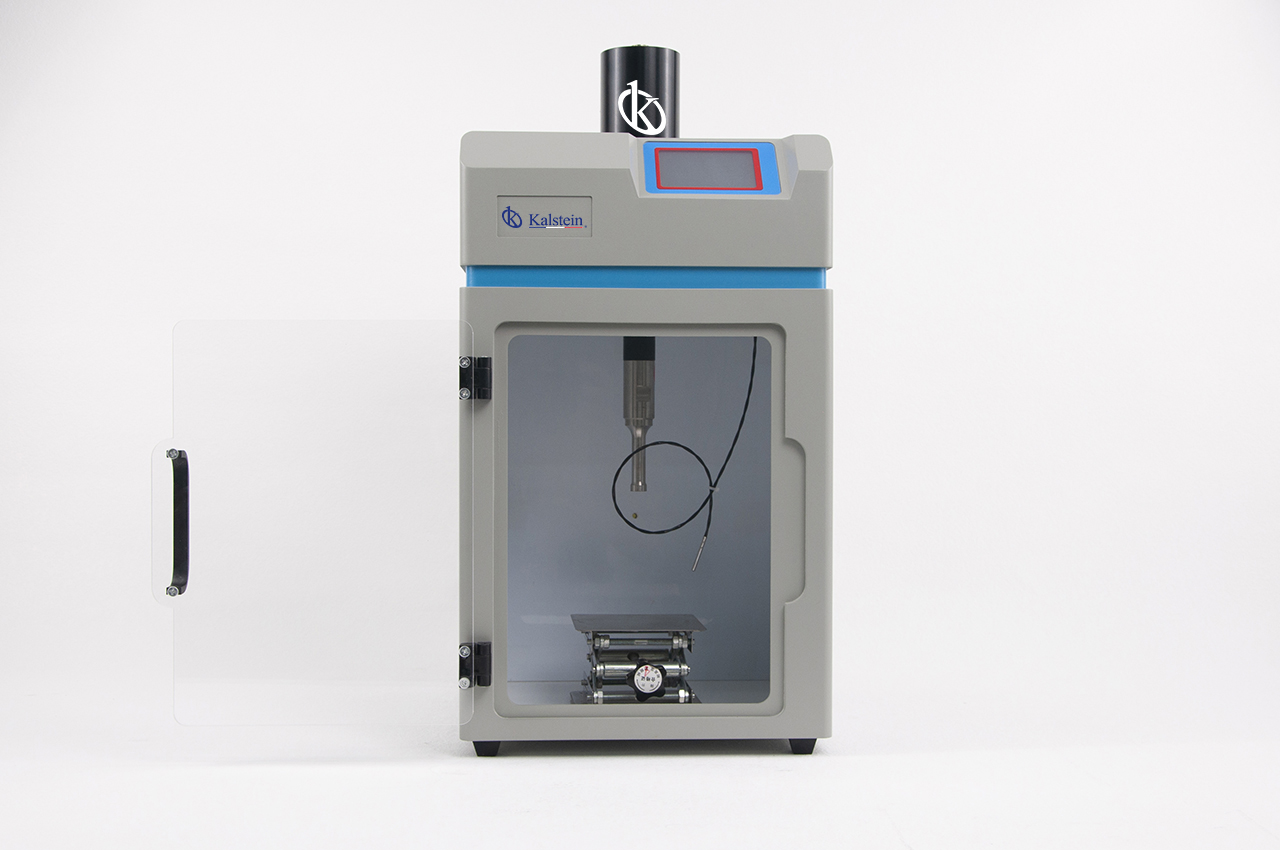Ultrasonic homogenizers are critical tools in laboratory environments, enabling efficient sample preparation through sound-wave induced cavitation. These devices disrupt cell structures and mix immiscible liquids with precision. In this article, we will explore two competitive models: the Digital Intelligent Ultrasonic Homogenizer Processor Sonicator YR05837 // YR05839 by Kalstein and the UP400St Ultrasonic Homogenizer by Hielscher.
The Digital Intelligent Ultrasonic Homogenizer Processor Sonicator YR05837 // YR05839 from Kalstein is designed to deliver robust performance in a compact form. This product is equipped with digital control and intelligent features that support a wide range of laboratory applications. Notably, it facilitates precise sample processing through its programmable settings, allows for easy monitoring via an LCD display, and supports RS232 connectivity, offering versatility in its operations.
By contrast, the UP400St Ultrasonic Homogenizer by Hielscher represents another advanced technology option for laboratories. It combines power and control, offering a touchscreen for intuitive use and comprehensive connectivity options, including USB and LAN. Capable of processing volumes ranging from 5 to 4000 mL, this model emphasizes scalability and user convenience.
Technical Specifications Comparison
| Feature | Kalstein YR05837 // YR05839 | Hielscher UP400St |
|---|---|---|
| Frequency | 20-25 KHz | 24 kHz |
| Power Output | 250W | 400W |
| Volume Capacity | 0.1 to 500 mL | 5 to 4000 mL |
| Connectivity | RS232 | USB, LAN |
| Interface | LCD Display | Touch Screen |
How They Work
Both devices operate through ultrasonic cavitation, where high-frequency sound waves generate microscopic bubbles in the liquid sample. These bubbles implode violently, causing disruption at the cellular level and facilitating thorough mixing. The Kalstein model offers a frequency range of 20-25 KHz, suitable for precise sample processing in smaller volumes. Conversely, the Hielscher unit’s 24 kHz output is ideal for larger volumes.
Applications
Kalstein’s ultrasonic homogenizers are invaluable in biological, chemical, and pharmaceutical research. They are particularly effective in particle size reduction, emulsification, and cell lysis. This versatility makes them a staple in laboratory settings that require precision and adaptability.
Types
The market offers various types of ultrasonic homogenizers, differing in power output, volume capacity, and feature sets. Kalstein’s models cater to a wide array of laboratory needs with their customizable settings and reliable performance, making them suitable for diverse scientific research applications.
Market Pricing
Pricing for ultrasonic homogenizers can vary significantly based on features and capabilities. Typically, mid-range models like the Kalstein Sonicator are competitively priced, offering exceptional value without compromising functionality. Hielscher’s models, with their additional power and scalability, often command a higher price premium. It’s always advisable to contact suppliers directly to obtain the latest pricing and promotional deals.
Frequently Asked Questions
What is an ultrasonic homogenizer used for?
Ultrasonic homogenizers are utilized for mixing and cell disruption in various research fields, including chemistry and biology.
How do I choose the right ultrasonic homogenizer?
Consider power output, volume capacity, and specific application requirements when choosing an ultrasonic homogenizer.
Can ultrasonic homogenizers be used for nanoparticle dispersions?
Yes, these devices are highly effective for producing uniform nanoparticle dispersions.
Advantages and Disadvantages
Kalstein’s ultrasonic homogenizers stand out for their robust build and versatile functionalities, including precise control through digital interfaces. Their compact design and efficient power usage are real assets. On the other hand, Hielscher’s homogenizers provide superior power output and extensive connectivity, though at a higher price point and greater size.
Field Use
In practical laboratory environments, the Kalstein models excel in straightforward, precision tasks such as cell disruption or the preparation of emulsions. Their RS232 connectivity also facilitates integration into existing laboratory systems. Hielscher’s units, with their advanced connectivity, are optimal for complex or large-scale operations requiring data logging and remote operation.
Recommendations
For optimal performance, it is recommended to regularly calibrate and maintain your ultrasonic homogenizer according to the manufacturer’s instructions. Utilizing correct probe sizes for different sample volumes will also extend the device’s lifespan and ensure consistent output. Leverage the digital features provided by Kalstein to streamline and automate processes, enhancing overall laboratory efficiency.
If you are in the market for high-quality laboratory equipment that combines innovation and reliability, look no further. At Kalstein, we provide an unparalleled catalogue of lab instruments crafted with excellence. Explore our user-friendly online platform, designed for your convenience, and benefit from our competitive pricing today. Don’t hesitate—it’s time to become part of our dedicated scientific community. https://kalstein.co.nz/product/digital-intelligent-ultrasonic-homogenizer-processor-sonicator-yr05837-yr05839/.

